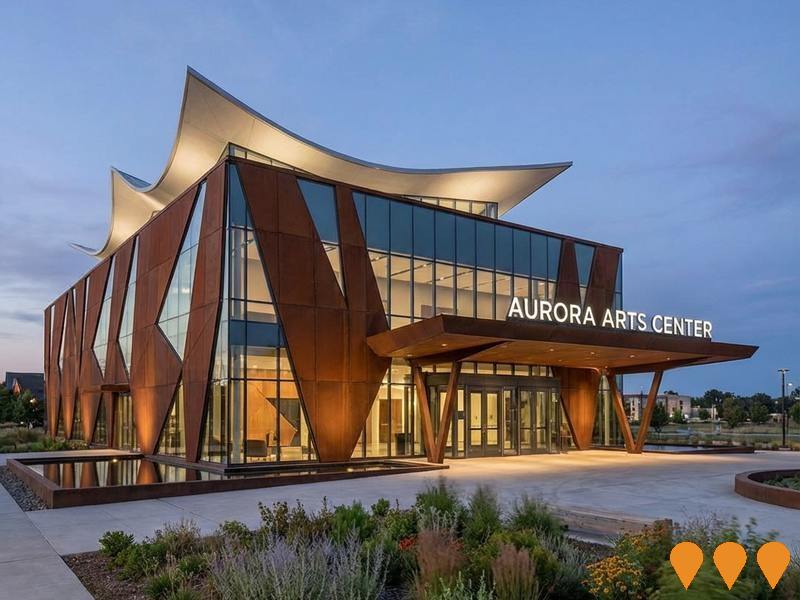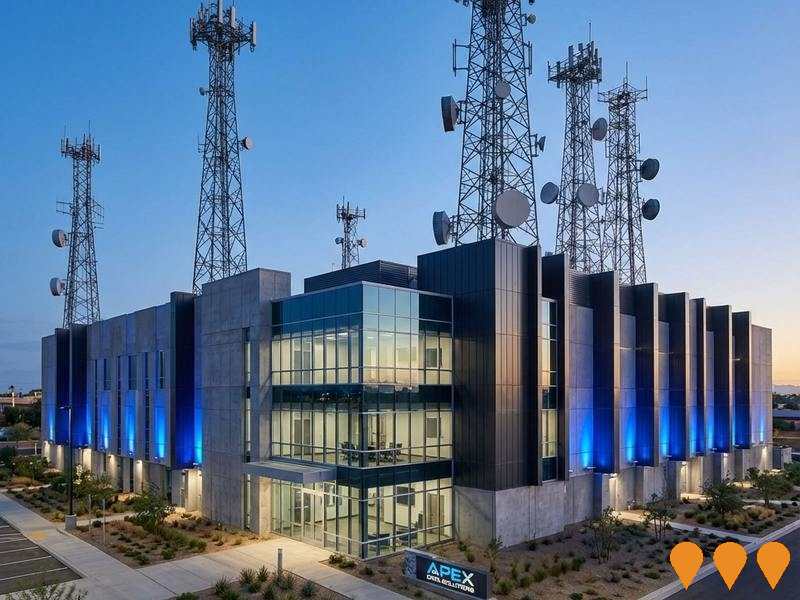Chart Color Schemes
est. as @ -- *
ABS ERP | -- people | --
2021 Census | -- people
Sales Activity
Curious about local property values? Filter the chart to assess the volume and appreciation (including resales) trends and regional comparisons, or scroll to the map below view this information at an individual property level.
Find a Recent Sale
Sales Detail
Population
Petermann - Simpson is positioned among the lower quartile of areas assessed nationally for population growth based on AreaSearch's assessment of recent, and medium term trends
As of Aug 2025, Petermann - Simpson's population is around 2,264. This reflects a growth of 303 people (15.5%) since the 2021 Census, which reported a population of 1,961 people. The increase was inferred from an estimated resident population of 2,251 in June 2024 and five additional validated addresses since the Census date. This results in a population density ratio of approximately 0 persons per square kilometer. Petermann - Simpson's growth rate exceeded both national (8.6%) and state averages, positioning it as a regional growth leader. Overseas migration contributed approximately 82.6% to overall population gains during recent periods.
AreaSearch uses ABS/Geoscience Australia projections for each SA2 area, released in 2024 with a base year of 2022. For areas not covered by this data and post-2032 estimations, growth rates by age cohort are applied using ABS Greater Capital Region projections (released in 2023, based on 2022 data). Future population dynamics anticipate above median growth for Australia's non-metropolitan areas, with the area projected to expand by 324 persons to 2041, reflecting a total increase of 13.7% over the 17-year period.
Frequently Asked Questions - Population
Development
The level of residential development activity in Petermann - Simpson is very low in comparison to the average area assessed nationally by AreaSearch
Petermann-Simpson shows minimal construction activity with an average of one new dwelling approved annually over the five years from 2016 to 2020, inclusive. This resulted in a total of six approvals during this period. The low development levels reflect the rural nature of the area, where housing needs are typically met through specific local demands rather than broader market pressures.
It is important to note that with such a small number of approvals, individual projects can significantly impact annual growth and relative statistics. Petermann-Simpson's development activity is naturally much lower compared to the Rest of NT and also below national patterns. Recent development in the area has been entirely comprised of detached dwellings, maintaining its rural character while favouring space. This preference for detached housing (39.0% at Census) indicates a robust demand for family homes despite increasing density pressures.
Between 2016 and 2041 inclusive, Petermann-Simpson is projected to grow by 311 residents. At current development rates, housing supply may struggle to keep pace with population growth, potentially intensifying buyer competition and supporting price increases.
Frequently Asked Questions - Development
Infrastructure
Petermann - Simpson has limited levels of nearby infrastructure activity, ranking in the 4thth percentile nationally
Fourteen infrastructure projects have been identified by AreaSearch as potentially impacting the area's performance. Key projects include Ernabella Arts Centre Extension and Refurbishment, APY Lands Groundwater Quantity and Quality Investigation, Better and Safer Future for Central Australia, Coastal Hazards Adaptation Strategy. The following list details those likely to be most relevant.
Professional plan users can use the search below to filter and access additional projects.
INFRASTRUCTURE SEARCH
 Denotes AI-based impression for illustrative purposes only, not to be taken as definitive under any circumstances. Please follow links and conduct other investigations from the project's source for actual imagery. Developers and project owners wishing us to use original imagery please Contact Us and we will do so.
Denotes AI-based impression for illustrative purposes only, not to be taken as definitive under any circumstances. Please follow links and conduct other investigations from the project's source for actual imagery. Developers and project owners wishing us to use original imagery please Contact Us and we will do so.
Frequently Asked Questions - Infrastructure
Better and Safer Future for Central Australia
AUD 250 million Australian Government program delivering new and upgraded housing (approximately 77 new dwellings), Remote Training Hubs, community infrastructure upgrades, and family safety initiatives across multiple remote Central Australia communities.
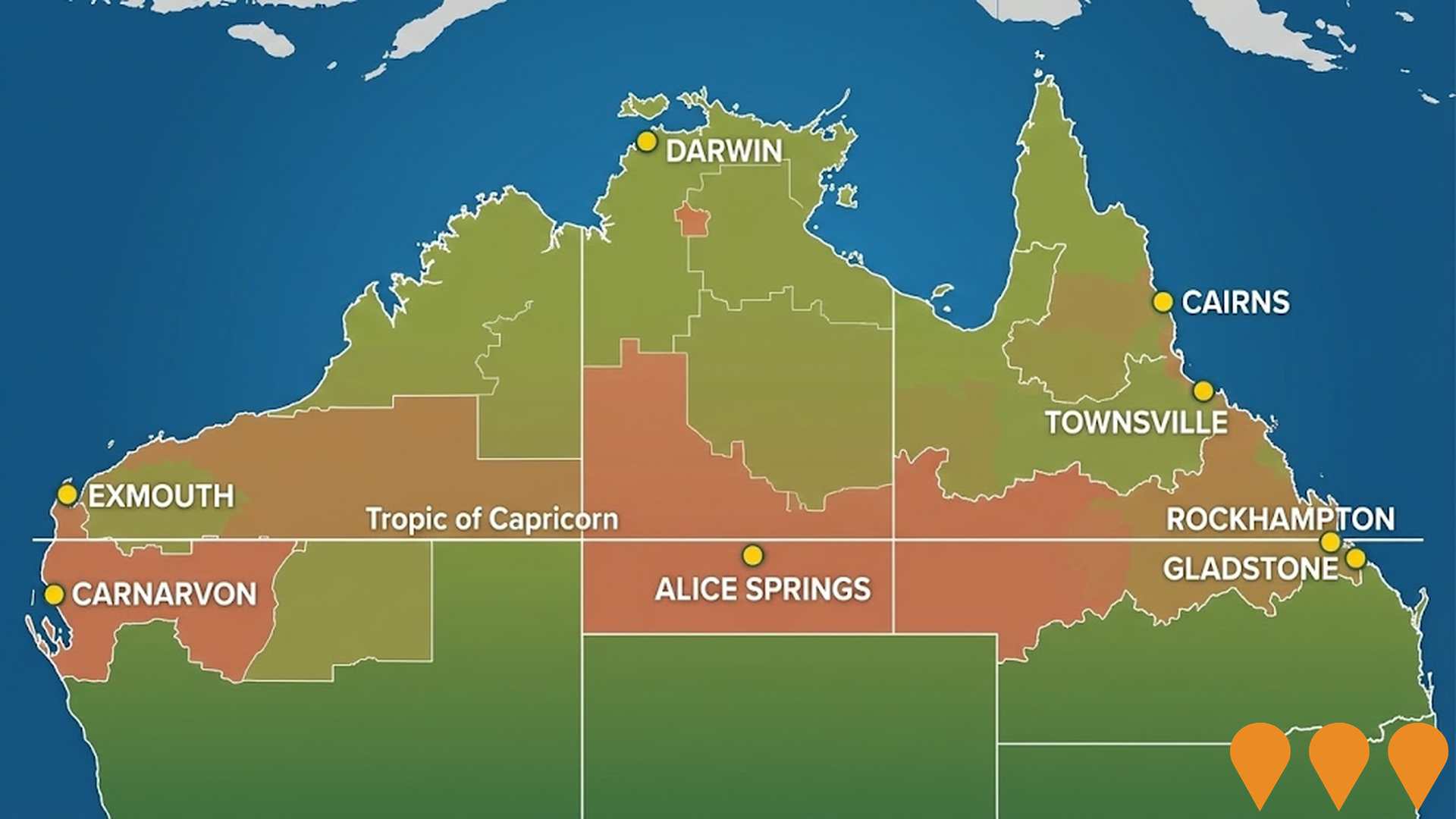
Alice Springs Future Grid - Roadmap to 2030
Three year whole of system initiative led by the Intyalheme Centre for Future Energy (a Desert Knowledge Australia project) to identify and remove barriers to achieving 50% renewable generation in Alice Springs by 2030. Concluded in 2024 with the Roadmap to 2030 and a suite of final reports after trials including a virtual power plant, an islandable microgrid at the Desert Knowledge Precinct, public housing solar and battery trial, and wind resource monitoring.
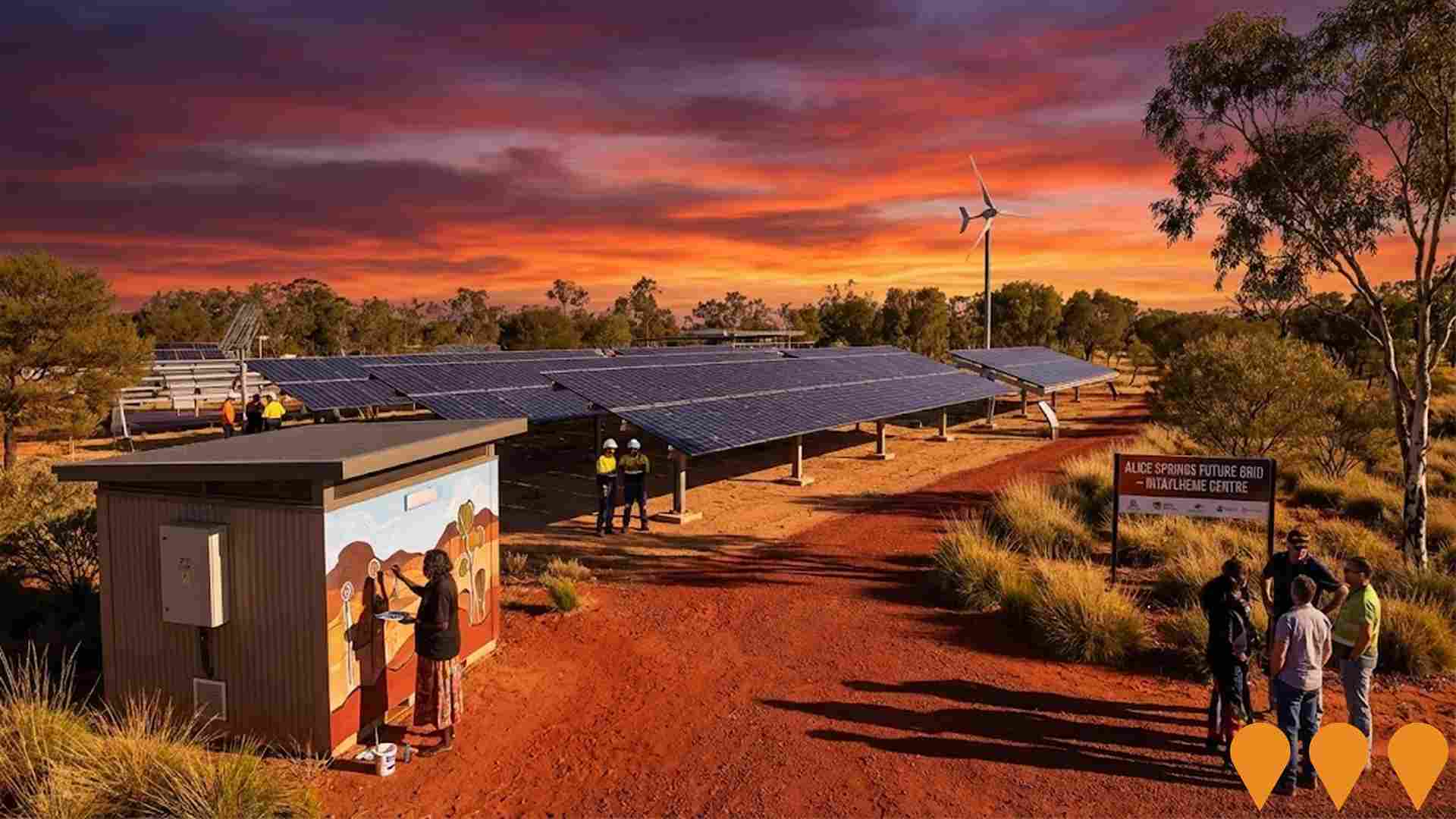
Enabling Digital Health Services for Regional and Remote Australia
National initiative to expand and improve digital health access for people in regional and remote Australia. Focus areas include enabling telehealth and virtual care, upgrading clinical systems and connectivity, supporting secure information exchange, and building workforce capability in digital health, aligned with the Australian Government's Digital Health Blueprint and Action Plan 2023-2033.
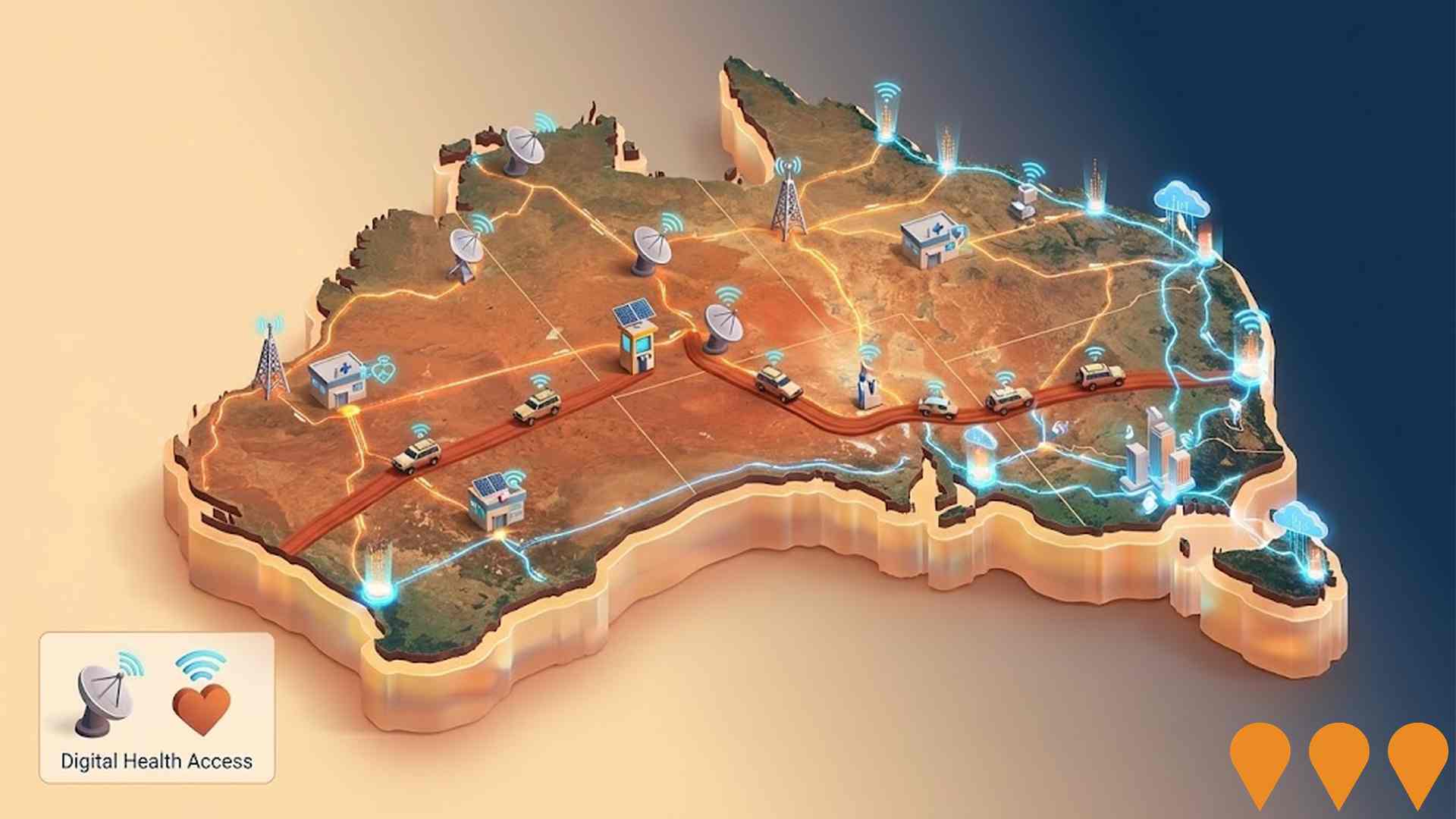
Enabling Infrastructure for Hydrogen Production
Australia has completed the National Hydrogen Infrastructure Assessment (NHIA) to 2050 and refreshed its National Hydrogen Strategy (2024). The programmatic focus has shifted to planning and enabling infrastructure through measures such as ARENA's Hydrogen Headstart and the Hydrogen Production Tax Incentive (from April 2025). Round 2 of Hydrogen Headstart consultation occurred in 2025. Collectively these actions aim to coordinate investment in transport, storage, water and electricity inputs linked to Renewable Energy Zones and priority hubs, supporting large-scale renewable hydrogen production and future export supply chains.
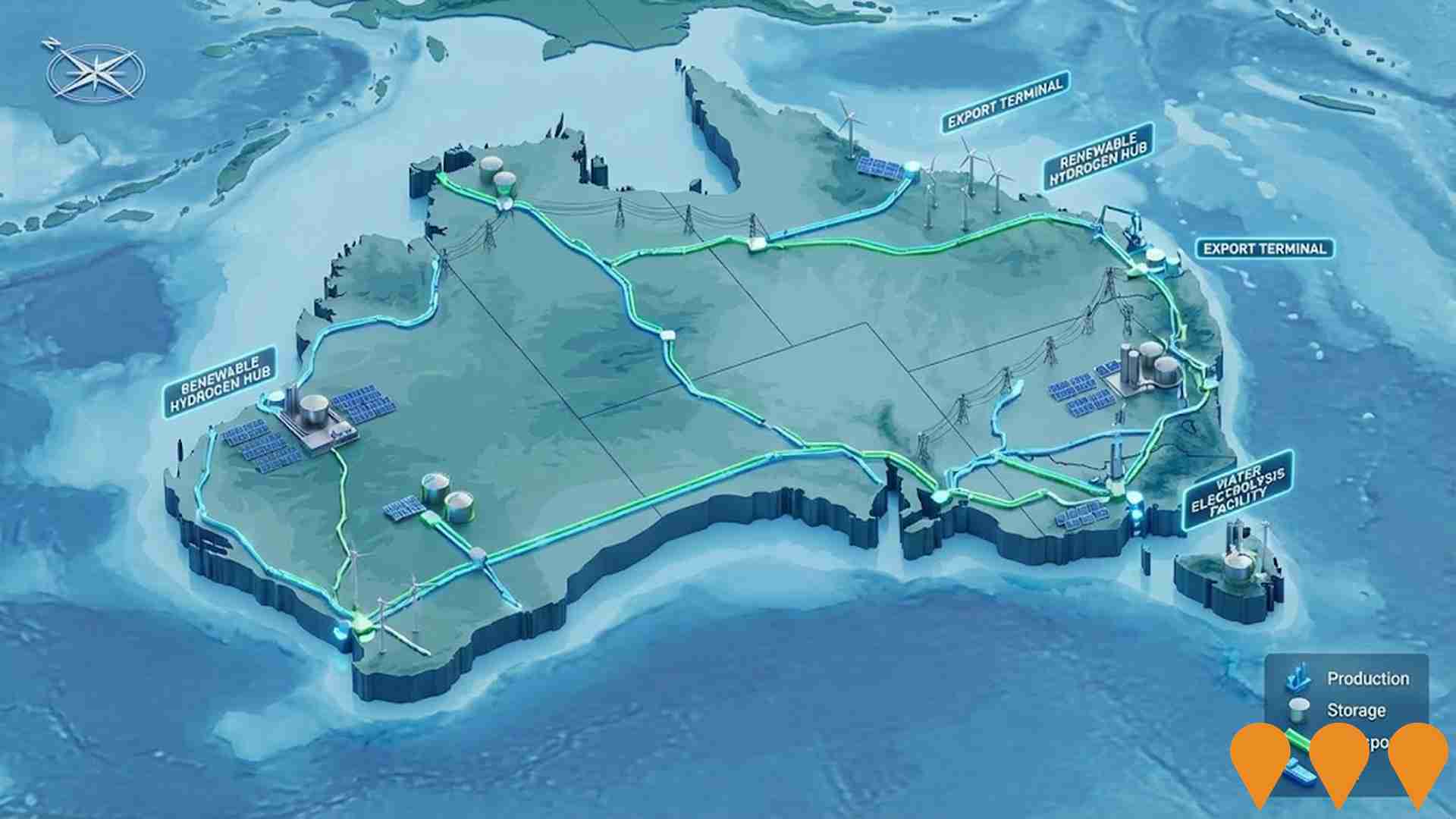
National EV Charging Network (Highway Fast Charging)
Partnership between the Australian Government and NRMA to deliver a backbone EV fast charging network on national highways. Program funds and co-funds 117 DC fast charging sites at roughly 150 km intervals to connect all capital cities and regional routes, reducing range anxiety and supporting EV uptake.

Bulk Water Supply Security
Nationwide program led by the National Water Grid Authority to improve bulk water security and reliability for non-potable and productive uses. Activities include strategic planning, science and business cases, and funding of state and territory projects such as storages, pipelines, dam upgrades, recycled water and efficiency upgrades to build drought resilience and support regional communities, industry and the environment.

Network Optimisation Program - Roads
A national program concept focused on improving congestion and reliability on urban road networks by using low-cost operational measures and technology (e.g., signal timing, intersection treatments, incident management) to optimise existing capacity across major city corridors.

APY Lands Groundwater Quantity and Quality Investigation
Research and planning project to investigate groundwater quantity and quality across the APY Lands to identify sustainable water supplies for communities and local enterprises. Scope includes drilling, sampling and testing, hydrogeological assessment of newly identified aquifers near Kaltjiti, and community engagement to set water use priorities. Funded by the National Water Grid Fund with delivery led by the SA Department for Environment and Water.

Employment
While Petermann - Simpson retains a healthy unemployment rate of 3.8%, recent employment declines have impacted its national performance ranking
Petermann-Simpson has a skilled workforce with prominent tourism and hospitality sectors. As of June 2025, its unemployment rate is 3.8%.
In June 2025, 1,656 residents are employed, with an unemployment rate of 2.1% below the Rest of NT's rate of 5.9%, and workforce participation at 60.6%, compared to Rest of NT's 50.7%. Dominant employment sectors include accommodation & food, arts & recreation, public administration & safety. Accommodation & food has notable concentration, with levels 6.7 times the regional average. Health care & social assistance is under-represented at 5.9%, compared to Rest of NT's 18.8%.
Many residents commute elsewhere for work based on Census data. Between June 2024 and June 2025, labour force decreased by 1.8% and employment declined by 1.7%, reducing unemployment by 0.1 percentage points. National employment forecasts from Jobs and Skills Australia (May 2025) project growth of approximately 5.6% over five years and 11.8% over ten years for Petermann-Simpson, based on industry-specific projections applied to its employment mix.
Frequently Asked Questions - Employment
Income
Income levels align closely with national averages, indicating typical economic conditions for Australian communities according to AreaSearch analysis
Petermann-Simpson's median income among taxpayers was $63,602 in financial year 2022. The average income stood at $81,180 during the same period. These figures compare to those for the Rest of NT, which were $51,655 and $61,577 respectively. By September 2025, estimates suggest median income will be approximately $71,241 and average income $90,930, based on a Wage Price Index growth of 12.01% since financial year 2022. According to the 2021 Census, household incomes were at the 17th percentile, while personal income was at the 51st percentile. The $800 - 1,499 income bracket dominated with 38.1% of residents (862 people), contrasting with regional levels where the $1,500 - 2,999 bracket led at 33.6%. Housing costs were modest, with 90.8% of income retained, but total disposable income ranked at just the 24th percentile nationally.
Frequently Asked Questions - Income
Housing
Petermann - Simpson displays a diverse mix of dwelling types, with a higher proportion of rental properties than the broader region
Petermann - Simpson's dwelling structure, as assessed in the latest Census, consisted of 38.7% houses and 61.2% other dwellings (semi-detached, apartments, 'other' dwellings). In contrast, Non-Metro NT had 67.8% houses and 32.2% other dwellings. Home ownership in Petermann - Simpson was at 6.9%, with dwellings either mortgaged (0.7%) or rented (92.3%). The median monthly mortgage repayment was $758, below Non-Metro NT's average of $1,800 and the national average of $1,863. The median weekly rent in Petermann - Simpson was $123, compared to Non-Metro NT's $280 and the national figure of $375.
Frequently Asked Questions - Housing
Household Composition
Petermann - Simpson features high concentrations of lone person households, with a lower-than-average median household size
Family households comprise 48.1% of all households, including 17.6% couples with children, 22.0% couples without children, and 5.9% single parent families. Non-family households account for the remaining 51.9%, with lone person households at 49.8% and group households comprising 2.5% of the total. The median household size is 2.2 people, which is smaller than the Rest of NT average of 2.8.
Frequently Asked Questions - Households
Local Schools & Education
Petermann - Simpson faces educational challenges, with performance metrics placing it in the bottom quartile of areas assessed nationally
The area's university qualification rate is 19.5%, significantly lower than the Australian average of 30.4%. This presents both a challenge and an opportunity for targeted educational initiatives. Bachelor degrees are most prevalent at 14.4%, followed by postgraduate qualifications (3.9%) and graduate diplomas (1.2%). Vocational credentials are prominent, with 41.0% of residents aged 15+ holding them - advanced diplomas (10.8%) and certificates (30.2%).
Educational participation is high at 28.6%, including 12.1% in primary, 4.7% in secondary, and 4.1% in tertiary education. Eleven schools serve 192 students across the area, with varied educational conditions between Petermann and Simpson. The educational mix includes two primary, four secondary, and five K-12 schools. School places per 100 residents (8.5) are below the regional average (15.0), indicating some students may attend schools in adjacent areas. Note: where school enrolments show 'n/a', please refer to the parent campus.
Frequently Asked Questions - Education
Schools Detail
Nearby Services & Amenities
Transport
No public transport data available for this catchment area.
Frequently Asked Questions - Transport
Transport Stops Detail
Health
Petermann - Simpson's residents boast exceedingly positive health performance metrics with very low prevalence of common health conditions across all age groups
Petermann-Simpson shows excellent health outcomes across all age groups, with very low prevalence of common health conditions. Private health cover rate is exceptionally high at approximately 61% (1,376 people), compared to 53.7% in Rest of NT and the national average of 55.3%. Diabetes and asthma are the most common medical conditions, affecting 7.2% and 5.6% respectively.
77.8% of residents report no medical ailments, compared to 76.9% in Rest of NT. The area has 4.9% (110 people) aged 65 and over, lower than the 9.3% in Rest of NT. Health outcomes among seniors are strong, similar to those of the general population.
Frequently Asked Questions - Health
Cultural Diversity
Petermann - Simpson was found to be more culturally diverse than the vast majority of local markets in Australia, upon assessment of a range of language and cultural background related metrics
Petermann-Simpson has a higher cultural diversity than most local markets, with 15.8% of its population born overseas and 54.4% speaking a language other than English at home. Christianity is the predominant religion in Petermann-Simpson, accounting for 49.4% of the population. However, there is an overrepresentation of 'Other' religions, making up 7.0% compared to the regional average of 2.1%.
In terms of ancestry, Australian Aboriginal is the most represented group at 43.3%, significantly higher than the regional average of 28.9%. Australian and English groups follow with 15.0% and 13.6% respectively. Notably, Spanish (1.0%), Filipino (1.7%), and Korean (0.4%) ethnicities are overrepresented compared to regional averages.
Frequently Asked Questions - Diversity
Age
Petermann - Simpson hosts a very young demographic, ranking in the bottom 10% of areas nationwide
Petermann-Simpson's median age of 30 years is close to the Rest of Northern Territory's (NT) median age of 31 and significantly lower than the national average of 38 years. Compared to the Rest of NT, Petermann-Simpson has a higher proportion of residents aged 25-34 years (26.0%) but fewer residents aged 5-14 years (8.6%). This concentration of 25-34 year-olds is well above the national average of 14.5%. Between the 2016 and 2021 censuses, the proportion of Petermann-Simpson's population aged 15 to 24 years increased from 17.5% to 21.2%, while the proportion of those aged 35 to 44 years decreased from 16.3% to 14.5%. The proportion of residents aged 45 to 54 years also dropped, from 11.8% to 10.4%. Demographic modeling suggests that by 2041, Petermann-Simpson's age profile will change significantly. Leading this shift, the number of residents aged 25 to 34 years is projected to grow by 34%, increasing from 587 to 787 people. Conversely, both the 35 to 44 and 55 to 64 age groups are expected to have reduced numbers.
